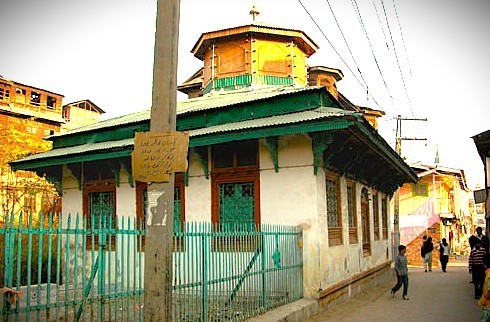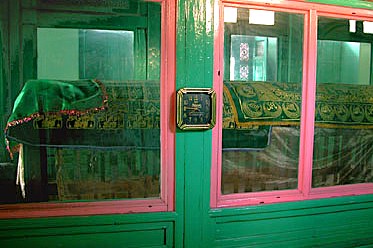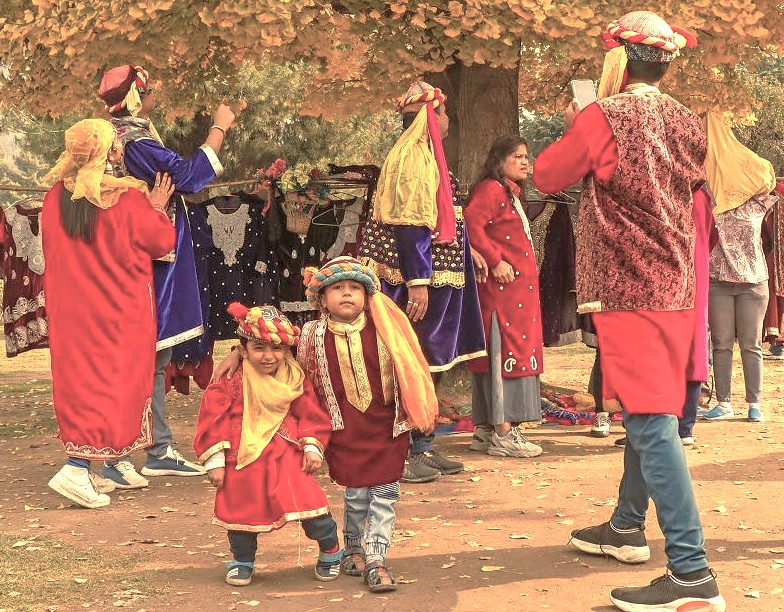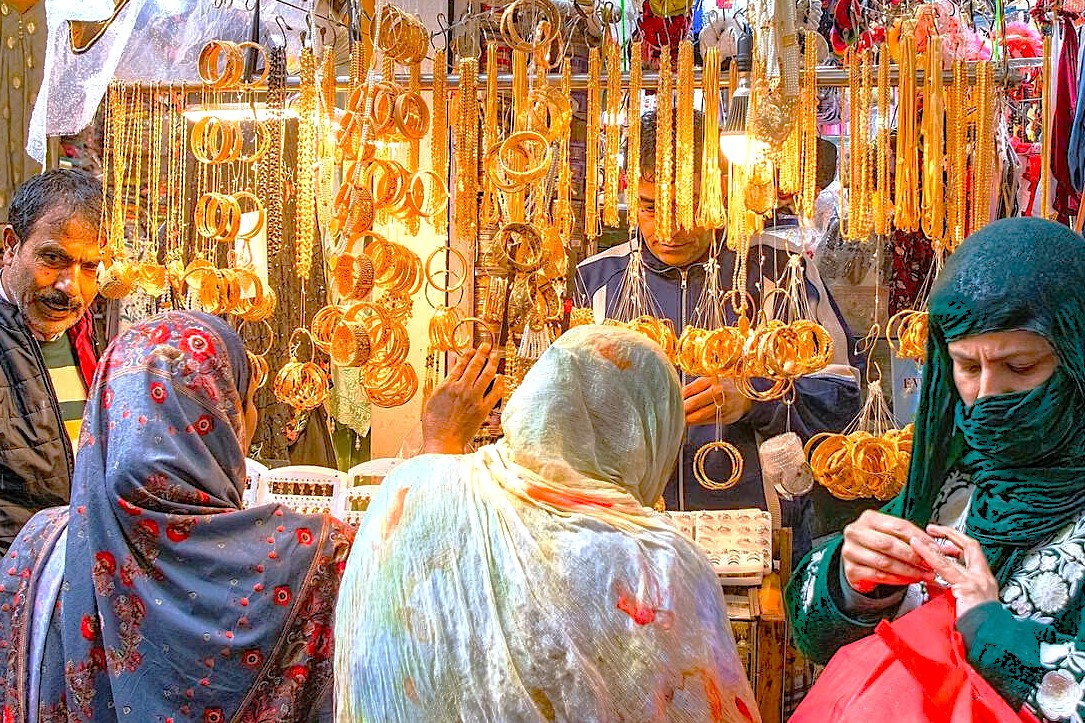Kashmir
Tomb of Jesus Srinagar Kashmir
Mother Masala Tours
The Roza Bal Phenomenon
Tomb of Jesus Srinagar Kashmir. Also known as Roza Bal. Roza Bal means “Honored Tomb” in Kashmiri and Persian and is positioned down atmospheric cobbled lanes, tucked away among the residential quarters of one of old Srinagar’s oldest precincts. This edifice’s formation and history have transfixed wanderers, researchers, and locals alike for over 600 years. The origins trace back at least to the 14th century when a figure called Yuz Asaf was buried here. In the late 1800s, the unique theory emerged - fueled by characters like Mirza Ghulam Ahmad and later Holger Kersten - that Yuz Asaf was in fact Jesus of Nazareth.

Tomb of Jesus Srinagar Kashmir. Timeless Artifacts
Within the shrine lies a meaningfully maintained sarcophagus, draped in cloth and set within a room of simple, classic design. The edifice includes blocks of local stone and ornately painted wooden elements unique to Kashmiri construction from the 14th - 18th centuries. Roza Bal still holds unique objects - an ancient gravestone inscribed in Persian and structural wooden lattices. There’s also a marked footstone within, believed by some to bear enigmatic imprints said to be from “the Prophet.”
Ancient Mosaics: Impeccable Craftsmanship

Notice the delicate hand-carved wooden framework that forms a refined barrier around the tombs within the Roza Bal shrine in Kashmir-Srinagar, India. This barrier, first assembled in the 1400s and maintained over centuries by local craftspeople, showcases subtle artistry. Observe the floral painting along the support beams, the intricate calligraphy on the plaques, and the deliberate orientation of the entire structure. Renovations in the 18th century added the additional color and protective woodwork visible today, preserving this unique piece of Kashmiri heritage.
Yuz Asaf in Srinagar: Teachings and Traditions
According to the alternative "Jesus in Kashmir" story, Jesus did not die on the cross in Jerusalem around 30 - 33 CE, but survived and traveled east in search of the "lost tribes of Israel." Proponents claim he journeyed through Persia and Afghanistan, arriving in Kashmir, India, in the first century CE. Local legend and some historical sources identify him as "Yuz Asaf," a revered holy man who lived and taught in the region. He is said to have carried on preaching Monotheism - only one God is recognized, performing acts of healing, and gaining a following among the people of Kashmir. The Roza Bal shrine, is claimed by some to be his burial site, where he continued teaching and lived to an old age before dying. The tomb contains a sarcophagus, foot-shaped stone, and is maintained as a local holy site.
The Pulse of the Local Community

We are immediately immersed in a relaxed, friendly, and peaceful mood. Locals in the Khanyar neighborhood are welcoming, and always respectful of seekers interested in the shrine. Storytelling is a classic part of daily life here; we will hear tales of ancient travelers and the spellbinding debates that have swamped the site for years. The overall energy is neither hectic nor reserved, but beautifully balanced - rooted in local reverence for shrines and saints, and completely unbothered by the international intrigue that occasionally surrounds the controversial tomb, offering a genuinely authentic experience in Srinagar.
Ancient Technologies: Sacred Sound, Geometry & Astrological Influences
Tomb of Jesus Srinagar Kashmir. The shrine’s classic building design is oriented toward Qibla - the direction of Mecca, aligning with Kashmiri sacred geometry. Wood and stone - used for their longevity and peaceful presence - compose the framework. Reverberations of prayer or the gentle hum from daily visitors contribute to a restful, meditative frequency. As with many Sufi shrines, acoustic resonance is said to linger at around 432 Hz and 528 Hz, part of the Solfeggio frequencies believed to encourage harmony, introspection, and even healing qualities.
Capturing the Magic: A Photographic Haven

Photography at the shrine and its surrounds requires a keen eye to capture its sacred mystery, especially since direct access is restricted and photography is often prohibited. Our lenses focus on the exterior's classic wooden latticework and the distinctive Kashmiri multi-tiered roof, documenting its presence in the bustling Khanyar quarter of Srinagar. When permitted a glimpse inside, the focus shifts to the tomb's veiled sarcophagi, with its ancient Persian inscriptions and unique footstone markings, framed by the simple wooden barrier. The entire composition from the exterior to the narrow alleys of Khanyar - tells a story rooted deeply in local tradition.
A Culinary Journey: Savor the Flavour
After our respectfully quiet visit, the flavor of the area comes alive in nearby tea houses: noon chai - salty pink tea - infused with green tea leaves, baking soda, salt, and milk, simmered for hours and famed for both its sumptuous mood and warming qualities. Served with sheermaal, a delicate local bread, this classic combination warms us in Srinagar’s cool air, delivering a reflective style of hospitality.
The Conection With the Gods

Its narrative connects directly with stories of Jesus - Isa, found in Islamic texts and the legends of Yuz Asafa - revered figure said to have journeyed from Jerusalem to Kashmir, settling here to spread wisdom in the 1st century CE. For some, this site is the authentic final resting place of a prophet; for others, it remains a historic puzzle that keeps spiritual dialogue alive across different faiths. The mood experienced here is both mystical and deeply reflective, offering a tangible thread back to ancient tales of compassion, profound miracles, and secret teachings that continue to define the spiritual landscape of Srinagar.
Serendipitous Meetings: Beyond the Main Path
Tomb of Jesus Srinagar Kashmir. We’ve found the side streets busy with small silk-spinning workshops, wooden crafts stalls, and family bakeries hand-milling flour or sweet Gulab Jamun. Sometimes we’re greeted by local guides eager to recount the classic legends of Khanyar, or find children making saffron-infused milk on winter mornings. The atmosphere is one of engaging contrasts: mystery beside daily life, sublime history within peaceful routines.
Resilience and Renewal: Overcoming Adversity’s Challenges

The shrine in and its surrounding neighborhood have faced immense adversity, including floods in 1893, a fire in 1965, and repeated periods of intense political unrest. Following each test, local families and dedicated Sufi caretakers came together for immediate restoration, meticulous repainting, and protection of the sacred relics. We are reminded that even as global mysteries and debates swirl around the alleged Jesus Tomb, the profound local faith in both the structure and the stories it holds endures, defining the unwavering spirit of this Kashmiri community.
Urban Legends: Strange Sightings, Myths and Mysteries
Many old-timers recount classic tales of blue-lights hovering above the shrine on certain holy nights, or of hearing mysterious voices reciting prayers in the calm of dawn. One prominent myth says that the tomb’s true secret will always evade anyone seeking to prove or disprove its link with Jesus - a phenomenon that will remain spellbinding, no matter how many scholars come.
Pack Your Spirit of Adventure: Find Your Wild Side

Stepping into this site means immersing ourselves in a beautiful composition of living legend, quiet contemplation, and enduring community spirit, all set in the heart of classic Kashmir. The shrine offers a profound historical experience where the ancient stories of Yuz Asaf and Jesus merge with the resilience of the Khanyar neighborhood. Come and immerse yourself in this unique atmosphere. The depth of the spiritual dialogue and the warmth of the locals are so unique, your wildest friend will demand proof you were actually experiencing these extraordinary things. Witnessing this spiritual intersection near the Himalayas provides a perspective unlike any other place in India.
Symphony of Generosity: Offerings from Wanderers to Residents
Tomb of Jesus Srinagar Kashmir. By showing respect, listening, and contributing to the Khanyar economy - buying tea, local goods, or simply sharing stories - we help sustain the unique culture that has made Roza Bal’s story so magical, ensuring it continues to inspire generation after generation. In return, we’re rewarded with hospitality, intricate knowledge, and a peaceful mood that lingers long after we leave.